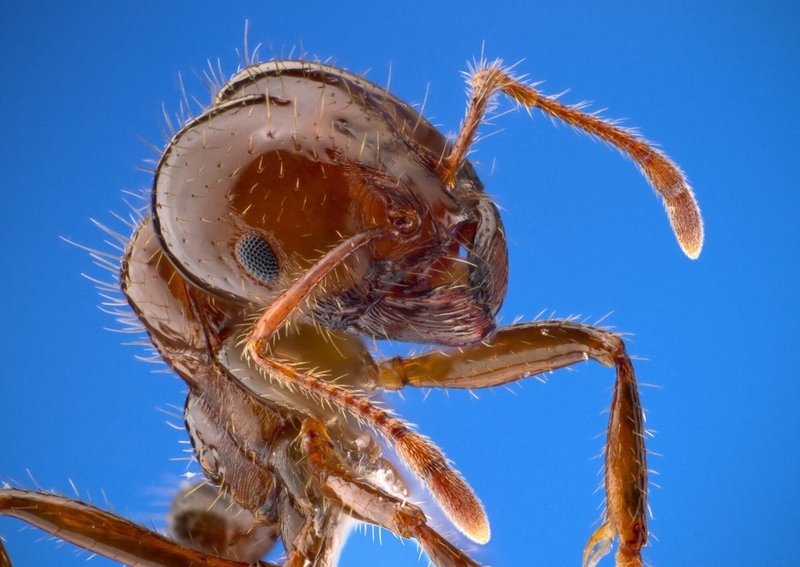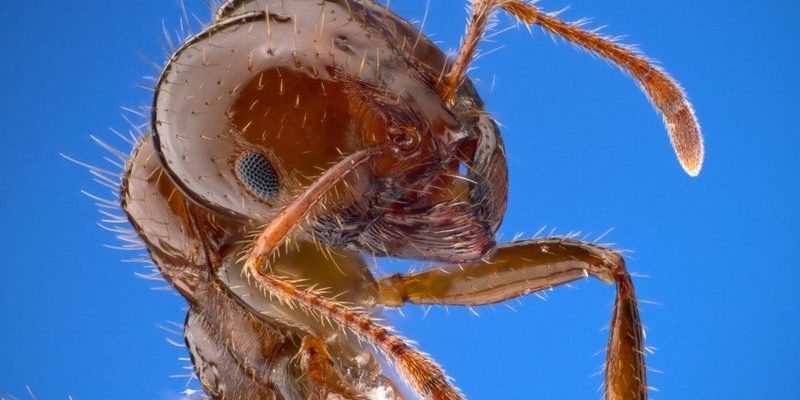
When you think of small creatures that work tirelessly, ants probably come to mind. Ants are fascinating little insects that belong to the family Formicidae. They live in highly organized colonies and have developed unique behaviors that allow them to thrive in various environments. Just picture a bustling city with everyone working towards a common goal—that’s the life of an ant!
Ants can be found almost everywhere on Earth, from lush forests to arid deserts. With over 12,000 known species, they come in various shapes, sizes, and colors. Some can be as tiny as a pinhead, while others can grow to be over an inch long. You might be wondering, what makes them so special? Let’s dive into the world of ants and uncover their secrets.
What is an Ant?
At its core, an ant is a social insect known for its complex structures and behaviors. Ants belong to the order Hymenoptera, which also includes bees and wasps. Their bodies are divided into three main parts: the head, thorax, and abdomen. On their heads, they sport large, sensitive antennae that help them communicate and navigate their environment. These hardworking insects are famous for their cooperation and division of labor within colonies.
Each ant colony is composed of three main types of members: queens, workers, and males. The queen’s primary role is reproduction, while worker ants handle foraging, caring for the young, and maintaining the nest. Males are there solely to mate with queens and typically die shortly after.
Interesting Facts About Ants
| Size: | 1/16 inch to over 1 inch long |
| Habitat: | Forests, deserts, grasslands, urban areas |
| Diet: | Omnivorous, including nectar, seeds, and insects |
| Speed: | Up to 1 mph |
| Lifespan: | 2-30 years, depending on the species |
Ant Habitats
Ants are incredibly adaptable creatures and can thrive in a wide range of habitats. They are found on every continent except Antarctica. Some species make their homes in trees, while others dig elaborate underground tunnels. They often create nests from soil, leaves, or even twigs, depending on what’s available in their environment.
In urban settings, ants can often be found in gardens, parks, and alongside buildings. They sometimes invade homes, seeking food and shelter. You might notice a parade of ants marching across your kitchen counter, all on a mission to gather crumbs! This adaptability is a key factor in their success as a species.
The Anatomy of an Ant
Understanding an ant’s anatomy can give you insight into its behavior and capabilities. As mentioned earlier, ants have three main body parts: the head, thorax, and abdomen. The head houses their large mandibles, which are crucial for carrying food, building nests, and defending the colony. It also contains their eyes, although some species have poor eyesight and rely more on pheromones and touch.
The thorax is where their six legs originate. These legs are strong and designed for speed and maneuverability. The abdomen contains vital organs, including the digestive system and, in the case of queens, the reproductive organs. Interestingly, some ants have a stinger in their abdomen that they use for protection. This stinger can deliver a painful sting, making them formidable little fighters!
Ant Communication
Ants communicate in a variety of ways, but perhaps the most fascinating method is through the use of pheromones—chemical signals they release to convey information. When a worker ant discovers food, it will leave a pheromone trail back to the nest, guiding others to the food source. This scent can also signal danger, attracting other ants to protect their colony.
In addition to pheromones, ants also use tactile communication. They might touch antennae or engage in physical displays during foraging or when defending their territory. This communication is essential for maintaining order and ensuring the survival of the colony.
Ant Diet and Foraging Behavior
Ants are omnivores, which means they eat a wide range of foods. They often forage for nectar, seeds, other insects, and even fungi. Some species have developed unique relationships with other insects, like aphids, which they “farm” for honeydew, a sugary substance produced by aphids.
The foraging behavior of ants is quite unique. They typically venture out in search of food in organized lines. You might notice them marching in a straight line, which maximizes efficiency. This teamwork is crucial—by working together, they can gather food more quickly and efficiently than if they were foraging alone. It’s a great example of how cooperation can lead to success!
Life Cycle of an Ant
An ant’s life cycle consists of four stages: egg, larva, pupa, and adult. The queen lays eggs, which hatch into tiny larvae. These larvae are fed and cared for by worker ants. Once they grow sufficiently, they enter the pupal stage, where they undergo metamorphosis. This stage can last several days or weeks, depending on the species and environmental conditions.
Eventually, the mature ants emerge from their cocoons as adults. They will either take on roles as workers or, if they are queens, prepare to start a new colony. It’s a remarkable transformation, and the efficiency of this life cycle is part of what has allowed ants to flourish on our planet.
Ants in the Ecosystem
Ants play a vital role in ecosystems. Their activities contribute to soil aeration, seed dispersal, and nutrient cycling. When ants dig their nests, they help to aerate the soil, allowing water and air to reach plant roots more easily. This improves plant health and promotes biodiversity in their habitats.
Additionally, ants are crucial in controlling pest populations. By preying on various insects, they help maintain a balanced ecosystem. This natural pest control reduces the need for chemical pesticides, benefiting both humans and the environment.
Common Ant Species
There are thousands of ant species worldwide, but some are more common than others. Let’s take a look at a few:
- Fire Ants: Known for their painful sting, these ants are often found in the southern United States.
- Carpenter Ants: They prefer to nest in wood, leading to potential property damage.
- Leafcutter Ants: Famous for cutting leaves to cultivate fungi, which they eat.
- Pharaoh Ants: Small and often found in homes, they can be challenging to eliminate due to their social structure.
Human Interaction with Ants
While many people admire ants for their industrious nature, some species can become pests in residential areas. Ants might invade kitchens, searching for food and creating ant trails. It’s important to manage these encounters humanely and effectively without causing harm to the ant population.
On the flip side, many people appreciate the benefits ants bring to the environment. Gardeners often welcome them for their pest-control abilities and soil aeration. If you find ants in your garden, consider observing their behavior rather than trying to eliminate them entirely, as they can play a beneficial role in maintaining a healthy ecosystem.
Ants in Popular Culture
Ants have captured human imagination in many ways. They appear in cartoons, movies, and literature, often symbolizing hard work and perseverance. One famous example is the movie “A Bug’s Life,” where ants band together to fight against oppression. This portrayal highlights the themes of teamwork and resilience.
Moreover, ant farms have become popular educational tools, allowing people to observe these fascinating creatures up close. They help foster appreciation for nature and teach valuable lessons about ecosystems and social behavior.
Conservation of Ant Species
While ants are abundant, some species face threats due to habitat loss, climate change, and pesticide use. Protecting these creatures is essential for maintaining the balance within ecosystems. By promoting biodiversity and preserving natural habitats, we can ensure that ants continue to thrive and perform their crucial roles in nature.
FAQ
What do ants eat?
Ants are omnivores, meaning they eat both plant and animal matter. Their diet can include nectar, seeds, fruits, fungi, and other insects. Some species even “farm” aphids for their sugary honeydew! This varied diet helps them adapt to different environments and ensures they can find food wherever they are.
How long do ants live?
The lifespan of an ant varies by species. Worker ants typically live for a few months, while queens can live for several years—sometimes even up to 30 years! The longevity of queens is essential for the survival of their colonies, as they are the primary reproducing individuals.
How do ants communicate?
Ants primarily communicate through pheromones, chemical signals that convey different messages. For example, when an ant finds food, it releases a pheromone trail that others follow. They also use touch and sound to communicate, showcasing their social nature and cooperation.
Can ants be pests in homes?
Yes, some ant species can become pests when they invade homes in search of food. Common household ants include carpenter ants and pharaoh ants. It’s important to manage these instances carefully, ideally by removing food sources and sealing entry points to prevent them from entering your home.
Do ants have a hierarchy?
Absolutely! Ant colonies have a distinct social structure. Queens, workers, and males each have specific roles. The queen is responsible for reproduction, workers handle foraging and nest maintenance, while males exist mainly to mate with the queen. This hierarchy helps the colony function efficiently.
What is the role of ants in the ecosystem?
Ants play a critical role in ecosystems through soil aeration, seed dispersal, and pest control. Their nesting activities help improve soil quality, and they contribute to plant growth. By preying on other insects, ants help maintain a balanced ecosystem and reduce the need for chemical pest control.
Are ants dangerous to humans?
Most ants are harmless to humans, but some species, like fire ants, can deliver painful stings that may cause allergic reactions in some people. It’s essential to be cautious around ant nests, especially if you encounter aggressive species. Generally, ants are more interested in food than in harming humans.
How many species of ants exist?
There are over 12,000 known species of ants, and scientists believe there may be many more yet to be discovered. This diversity allows ants to adapt to various habitats and conditions, making them one of the most successful groups of insects on Earth.
Where can I find ants?
Ants can be found almost everywhere, from forests to deserts to urban areas. They establish colonies in diverse environments, often creating nests underground, in trees, or even within buildings. If you’re curious to observe them, you can often find them in your garden or park! Just look for their trails or colonies.
How can I observe ants safely?
To observe ants safely, consider setting up a simple ant farm or observing them in their natural habitat. If you’re in the garden, watch them from a distance without disturbing their nests. You can also take note of their foraging behavior and interactions with each other. Always be cautious around nests to avoid stings!
What types of environments do ants prefer?
Ants are adaptable and can thrive in various environments, including forests, grasslands, deserts, and urban settings. They prefer areas that provide food and shelter, such as gardens or decaying wood. Each species has specific habitat preferences based on its unique needs.

